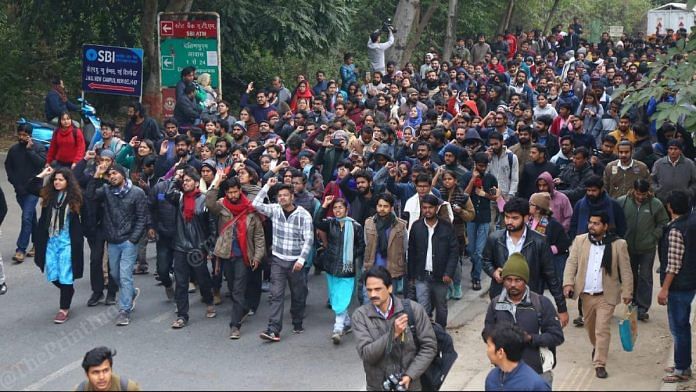Thank you dear subscribers, we are overwhelmed with your response.
Your Turn is a unique section from ThePrint featuring points of view from its subscribers. If you are a subscriber, have a point of view, please send it to us. If not, do subscribe here: https://theprint.in/subscribe/
“We will not give our forests; we will not give our land.” (Birsa Munda)
Birsa Munda was a folk hero and a tribal freedom fighter who played a pivotal role in the Indian independence movement, particularly in the tribal regions of British India.
A Manufactured Controversy
Congress leader Rahul Gandhi’s recent reference to Gen-Z has sparked an unusual political debate, with some quarters accusing him of inflaming a generational divide. Yet, the focus should not be on partisan bickering but on understanding the deeper anxieties driving this discourse. Gen Z—the cohort born roughly between 1997 and 2012—is emerging as a formidable social and political force. Their activism spans climate change, human rights, gender equality, and digital justice. They are hyper-connected, tech-savvy, and unafraid to question inherited hierarchies. This very assertiveness, however, has made them a target of a state-sponsored narrative portraying young dissenters as “Urban Naxals.”
The term “Urban Naxal” has become shorthand for anyone challenging dominant political ideologies, especially intellectuals, journalists, academics, and students advocating for social justice. Originally coined in connection with Maoist insurgencies, its contemporary usage is far more insidious: it conflates peaceful dissent with violent subversion. The result is a culture of fear, where Gen Z activists and critical thinkers are constantly under surveillance, threatened with arrest, or subjected to public vilification. The legal machinery, including draconian laws like the Unlawful Activities (Prevention) Act (UAPA), amplifies this repression. High-profile arrests, many later overturned or left unresolved, serve as a chilling warning.
Gen Z Under Siege
The psychological toll on young people is profound. Many students now self-censor their social media posts, withdraw from campus debates, or hesitate to join protest movements. The demonization of an entire generation stifles political imagination and discourages intergenerational dialogue. It also undermines democratic engagement precisely when India needs a politically aware and ethically grounded youth to challenge inequality, environmental degradation, and authoritarian tendencies.
Yet, Gen Z’s activism cannot be dismissed. Unlike previous generations, they leverage digital platforms to mobilize rapidly, share real-time information, and hold institutions accountable. Their campaigns—from climate strikes to protests against caste violence—demonstrate a sophisticated understanding of policy and governance. Branding them as threats is not only inaccurate but dangerous, as it normalizes state overreach and erodes civil liberties.
The Urban Naxal Narrative as Political Control
The manufactured panic surrounding “Urban Naxals” functions as a mechanism of political control. By framing dissent as a security threat, the state discourages debate and delegitimizes grassroots mobilization. This narrative also conveniently shifts attention away from structural failures: economic inequality, environmental degradation, rising authoritarianism, and the centralization of power. It allows governments to present themselves as protectors against an imagined internal enemy, rather than accountable actors in a democracy.
Historically, the suppression of intellectual and youth dissent is not new. During colonial rule, nationalist student movements were routinely painted as dangerous subversives. Post-independence, periods of authoritarianism—such as the Emergency (1975–77)—saw similar patterns of surveillance, intimidation, and arrests targeting students, journalists, and activists. The parallels are striking: in both eras, the young, critical, and politically aware were portrayed as threats to national stability rather than as essential contributors to democratic society.
The Cost of Silence
The consequences of silencing Gen Z extend beyond individual arrests or campus restrictions. Democracies thrive on debate, dissent, and informed engagement. When the state brands dissent as extremism, it corrodes trust in institutions and erodes the moral legitimacy of governance. A generation fearful of speaking out is a generation deprived of its potential to drive meaningful social change. India’s democracy, already under strain from growing centralization and populist politics, cannot afford this loss.
Recognizing Gen Z’s Role
Rather than demonizing Gen Z, society must recognize their essential contributions. They are not pawns of ideological subversion; they are agents of critical inquiry, ethical deliberation, and civic activism. Protecting their right to question, organize, and protest is crucial. Policies must focus on freedom of expression safeguards, transparent legal processes, and campus protections. Encouraging dialogue between generations can also counter the narratives that seek to isolate youth activism.
The ongoing rhetoric around “Urban Naxals” is less about security than it is about control. It attempts to reshape the moral and political imagination of a generation willing to challenge inequality and demand accountability. The choice India faces is clear: either embrace Gen Z as a vital democratic force or risk silencing the very voices that could guide the nation toward justice, equity, and sustainability.
Conclusion
The debate on Gen Z and the “Urban Naxal” label is more than a political controversy; it is a reflection of India’s struggle with dissent, democracy, and intergenerational understanding. The young are neither inherently radical nor inherently dangerous. They are questioning, observing, and mobilizing—a necessary function in any vibrant democracy. Suppressing them under the pretext of countering extremism weakens democratic institutions, constrains debate, and compromises the moral authority of the state.
Just as Birsa Munda fought for rights, identity, and justice, today’s youth continue the struggle in a new landscape. Their questions, critiques, and actions are not threats; they are the lifeblood of India’s democratic promise. Recognizing this truth is the first step toward a politics that respects dissent, values the young, and genuinely strengthens democracy.
These pieces are being published as they have been received – they have not been edited/fact-checked by ThePrint.


